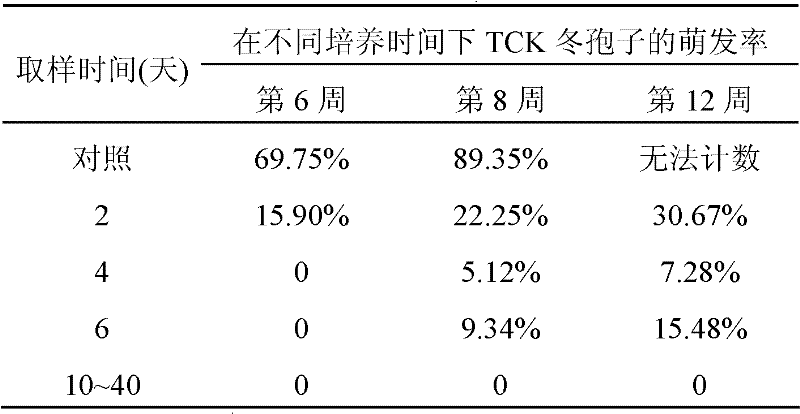Tilletia controversa teliospore composting harmless treatment method
A technology for the harmless treatment of dwarf smut of wheat, which is applied in the field of compost microbial fermentation treatment of T. dwarf smut, can solve the problems of wheat quality decline, environmental damage, difficulties, etc., and achieve the purpose of increasing soil water holding capacity, Protect the environment and realize the effect of recycling
- Summary
- Abstract
- Description
- Claims
- Application Information
AI Technical Summary
Problems solved by technology
Method used
Image
Examples
Embodiment 1
[0018] 1. Establishment of composting system and detection of physical and chemical parameters
[0019] Fresh cow dung from a cattle farm in Dalian was collected, and the initial C / N ratio of cow dung was measured to be 19. Add 1 / 4 volume of cow dung to the crushed straw to adjust the stacking C / N to 35, dry it and mix it evenly. Adjust the water content to 65% to become a suitable stacking material. Put the compost into the compost bin for static composting and fermentation. The used compost bin has no bottom and a cover, the external dimensions are 180 x 120 x 100 cm, the wall thickness is 10 cm, and the bottom of the bin is covered with a 20 cm straw layer. During the fermentation process, the lid is loosely covered on the compost bin, which can not only keep out the wind and rain, but also not affect the gas exchange between the heap and the outside world.
[0020] The small tubes containing the samples of TCK galls were buried in the heap at multiple points and evenly a...
PUM
 Login to View More
Login to View More Abstract
Description
Claims
Application Information
 Login to View More
Login to View More - R&D
- Intellectual Property
- Life Sciences
- Materials
- Tech Scout
- Unparalleled Data Quality
- Higher Quality Content
- 60% Fewer Hallucinations
Browse by: Latest US Patents, China's latest patents, Technical Efficacy Thesaurus, Application Domain, Technology Topic, Popular Technical Reports.
© 2025 PatSnap. All rights reserved.Legal|Privacy policy|Modern Slavery Act Transparency Statement|Sitemap|About US| Contact US: help@patsnap.com

